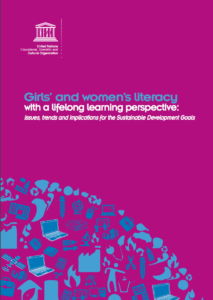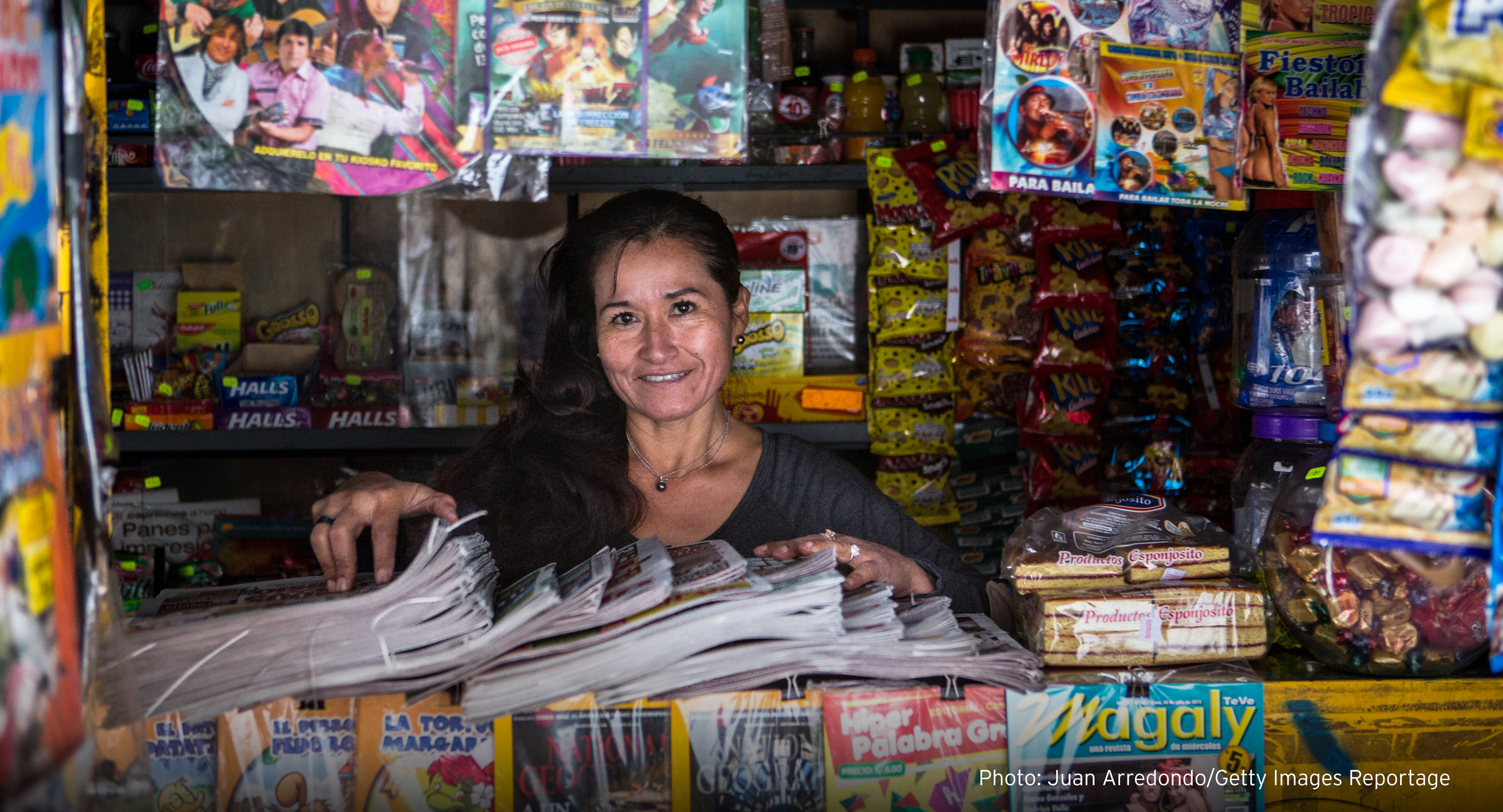In the past 15 years, global illiteracy rates among adults has barely budged, dropping from 18% of the population in 2000 to 14% in 2015. And here’s another consistent fact: women make up two-thirds of the illiterate population worldwide. Among countries with the lowest literacy rates, gender disparities are even wider, according to a new UNESCO report.
 “Girls’ and women’s literacy with a lifelong learning perspective: issues, trends and implications for the Sustainable Development Goals,” released May 2016 by UNESCO, states that three-quarters of the global illiterate population live in South and West Asia or sub-Saharan Africa. In West Africa, for example – which has a particularly poor record for adult literacy – less than 25% of women can read. Poor, rural women everywhere are among the most likely to be illiterate.
“Girls’ and women’s literacy with a lifelong learning perspective: issues, trends and implications for the Sustainable Development Goals,” released May 2016 by UNESCO, states that three-quarters of the global illiterate population live in South and West Asia or sub-Saharan Africa. In West Africa, for example – which has a particularly poor record for adult literacy – less than 25% of women can read. Poor, rural women everywhere are among the most likely to be illiterate.
Although literacy is a critical component to achieving SDG 4 – ensuring inclusive and equitable quality education and promoting lifelong learning opportunities for all – it is often neglected and under-resourced in national education programs. In order to give marginalized women a chance to learn, earn, and break the intergenerational cycle of poverty, governments, donors, and civil society need to prioritize non-traditional literacy programs. The lack of progress in both a) closing the gap between male to female illiteracy, and b) reducing the raw numbers of women who are illiterate, is a reflection of the lack of support given to women’s literacy learning and non-formal education programs.

While good quality women’s literacy programs backed by long-term political commitment are more the global exception than the rule, there are positive success stories that can guide and inspire champions of adult literacy.
China, for example, has experienced one of the fastest declines in illiteracy rates worldwide. India too has reduced the absolute number of its illiterate population, although it still remains the highest in the world. The literacy rate in South Africa continues to improve, thanks to a national commitment to deliver mass literacy campaigns in all eleven of the country’s official languages. And Nepal made remarkable progress boosting women’s literacy; its National Literacy Campaign even received UNESCO’s Confucius Literacy Prize in 2010.
The most successful women’s literacy programs have been designed with the aim of challenging gender inequities and empowering their beneficiaries in some way. Another crucial element of success is ensuring the program is locally owned.
The UNESCO-supported Females for Families program in Egypt – another winner of the UNESCO Confucius Prize for Literacy – is one example of a literacy intervention with community buy-in. In the remote Egyptian town of Abu-Ashur, where Females for Families operates, the local government had a five-year goal to raise its literacy rate from 78 to 93%. In addition to high illiteracy rates, the agricultural region suffered from inadequate health and education services; poor health, early marriage, and child labor were widespread.
The Abu-Ashur intervention is a model of family-based development. Local families designated 120 girls for an intensive six-month training, including literacy, health, human rights, income-generation, administrative, and communication skills. After the training, the girls returned back to their community, establishing home literacy classes while sharing information on health, hygiene and family planning. They also trained people in cooking, crafts, or agriculture, accompanied them to the doctor, encouraged children who had dropped out of school to return, and helped secure small loans. They became focal points for the administration, helping family members obtain identity and election cards, for example.
Hailed as a social and cultural breakthrough, Females for Families seeks to empower communities with far more than literacy skills. The fact that it has transformed local girls into leaders in their community and swept away prejudices about women in public life is counted among its many merits.
The program in Abu-Ashur underscores the importance of recognizing that SDG 4 is more than just an education goal. To be certain, we need to close the literacy gender gap. But we also need to recognize that the need for education extends beyond the four walls of the classroom. Providing non-traditional and lifelong learning opportunities is critical component of meeting that goal.
